Adult, the times have changed.
Author: Deep Tide TechFlow
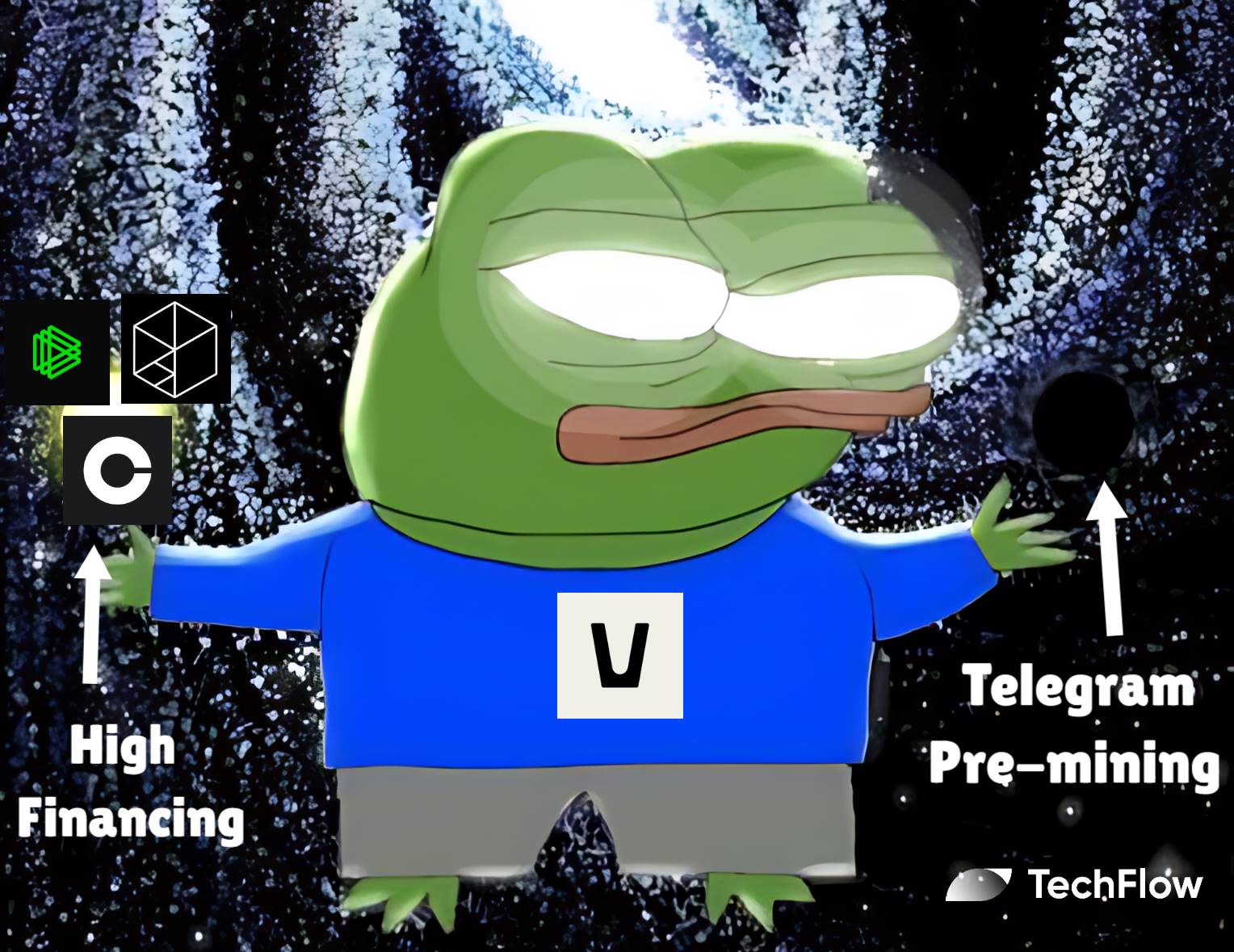
The market has been spending a long time in the cycle of "AI is not hot, AI is hot again".
Especially with the information of top VC investments, AI projects can often go from lukewarm to being widely discussed in an instant.
Apart from the discussion of Vitalik's live performance at Token 2049 yesterday, the most discussed project in the CT community is Vana: after the project announced that it had received a total of 25 million US dollars in funding from the three giants of encrypted VC, Coinbase Ventures, Paradigm, and Polychain, various likes, congratulations, and analysis posts immediately emerged.
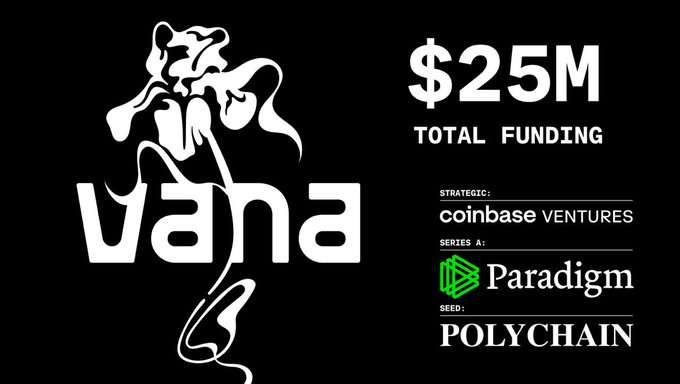
You may not love VC coins, but any large-scale financing in a market lacking hotspots is still worth paying attention to.
Vana's Twitter profile reads: "Realizing AI owned by users through user-owned data".
It seems to be another narrative against the monopoly of AI by large companies, another focus on data, and the familiar gathering of VCs… What's the differentiation for Vana this time?
Data DAO is high-end, uniting VC
As soon as Vana's financing information came out, everyone was optimistic.
For example, a Twitter user analyzed that Vana is the first AI project invested by Paradigm, and Vana received investments from different top VCs in different financing rounds:
Strategic round: Coinbase Ventures invested 5 million US dollars
Series A: Paradigm led a round of 18 million US dollars
Seed round: Polychain invested 2 million US dollars
If the three VC giants collectively favor a project, it is mostly because the narrative of the project and the problems it aims to solve are significant enough.
As mentioned at the beginning, the problem area that Vana focuses on is still the "dragon-slaying" narrative of data control in the AGI era --- individuals contribute data without getting returns, data privacy is not guaranteed; the big companies monopolize the training of AI models… Therefore, we need to break this situation.
But following the AI trend of the past two years, advocating for the coexistence of multiple AI models and opposing monopoly has become the correct narrative in the encrypted circle.
(Read more: Delphi Labs: AI will have multi-model competition, which encrypted applications do we favor?)
This is not a new story, but most of the encrypted AI projects currently telling this story are mostly concentrated in the DePIN field, which encourages the contribution of resources from different hardware in different fields.
The starting point for Vana to solve the problem seems to be both old and new --- using different types of DAOs for different purposes, allowing everyone to contribute different types of data for the training of AI models for different purposes.
In an article on their technical blog, Vana wrote:
"The data DAO is a decentralized entity that allows users to aggregate and manage their data… It's a bit like a data union. The DAO fully controls the data set and can choose to rent or sell anonymous copies. For example, Reddit's data can even be used on new platforms owned by users, including friends, past posts, and other data, which can be used on new platforms at any time."
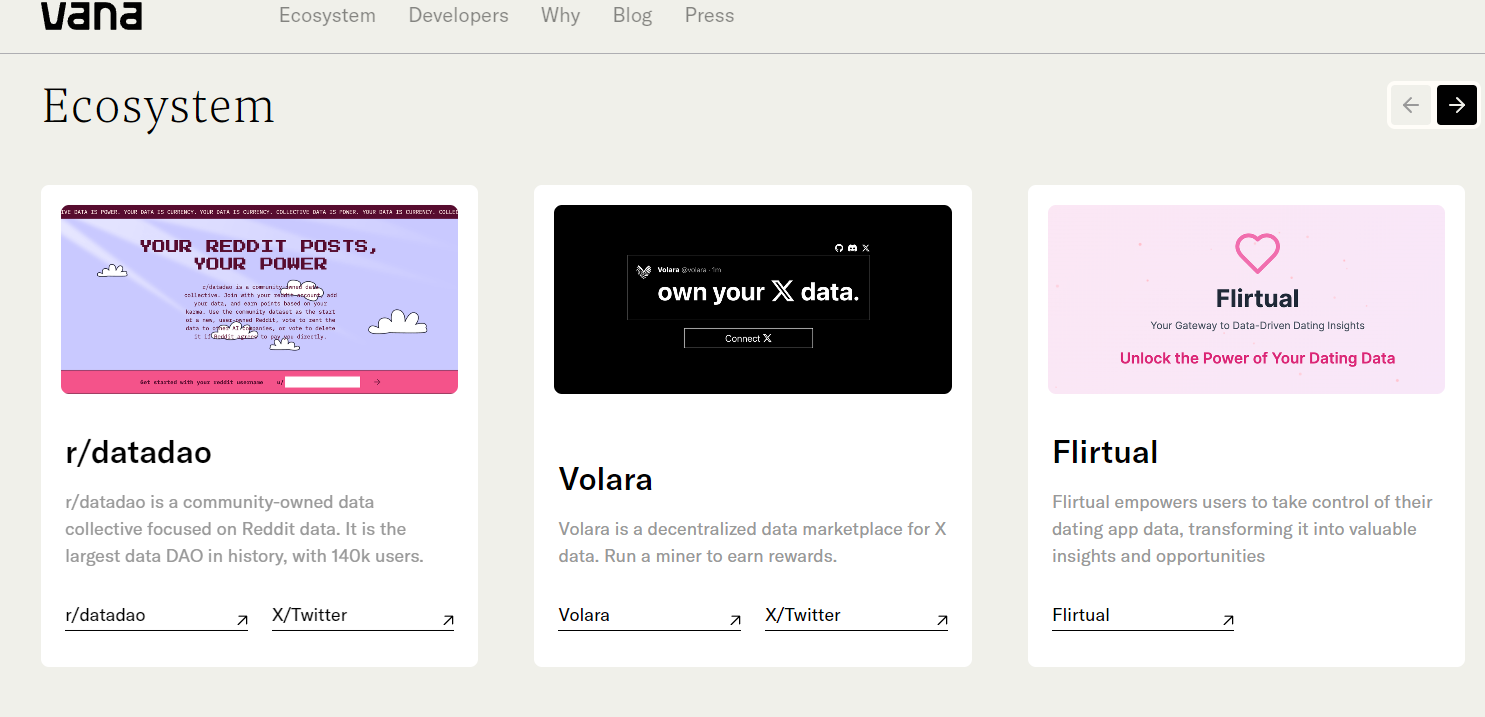
Currently, Vana's official website lists 16 different data DAOs, allowing users to contribute various types of data such as Reddit, Twitter, and dating apps, and control their ownership of this data through Vana's blockchain network.
At the same time, the data can be contributed to AI models that require specific vertical domain data for training, and users can also receive benefits.
If various data from various industries can be contributed in this DAO manner, it is indeed a relatively ideal model, but the problem lies in how to implement it.
This involves at least two specific issues:
How do you ensure that I have indeed contributed data?
How do you ensure the security and ownership of the contributed data?
And this also involves the implementation and principles of the Vana network.
The core of the Vana network lies in its unique multi-layered architecture design, aiming to create a decentralized data ecosystem to solve key issues such as data ownership, privacy protection, and value creation.
According to the latest architecture diagram, the Vana network mainly consists of three key components: Data Portability Layer, Data Liquidity Layer, and Universal Connectome.
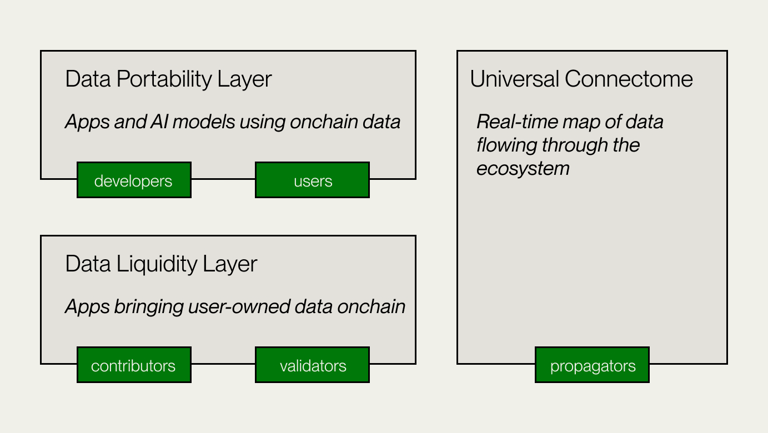
- Data Portability Layer --- This layer is the top layer of the Vana network, responsible for handling the application and AI models of on-chain data. In this layer, there are mainly two types of participants:
Developers: They create applications and AI models that use on-chain data.
Users: They use these applications and models, and are also the ultimate beneficiaries of the data.
The main function of this layer is to ensure the portability and interoperability of data, allowing users to easily transfer and use their data between different applications and models.
- Data Liquidity Layer --- This layer is responsible for bringing user-owned data onto the chain, serving as the foundation of the entire system. It includes two important types of participants:
Contributors: They contribute their own data to the system.
Validators: They are responsible for verifying the authenticity and value of the contributed data.
This layer solves the problem of how to securely and trustworthily transform offline data into on-chain assets, providing data liquidity for the entire ecosystem.
- Universal Connectome --- This is a unique component that serves as a real-time data flow map of the entire ecosystem. It consists of the following roles:
- Propagators: They are responsible for propagating and updating information about data flow in the ecosystem.
The role of the Universal Connectome is to provide a real-time map of data flow in the entire ecosystem, allowing all participants to understand the flow and usage of data.
These three components work closely together to form a complete data ecosystem:
The Data Liquidity Layer securely brings user-owned data onto the chain, providing raw data for the entire system.
The Data Portability Layer uses this on-chain data to support the development and use of various applications and AI models.
The Universal Connectome monitors and displays the real-time data flow in the entire ecosystem, ensuring transparency and traceability.
Without delving into the technical details of implementation, such as smart contracts, ZK, and code-level aspects, you can colloquially view Vana as a blockchain network that provides a comprehensive solution for the contribution, verification, use, and monitoring of data.
The grand infrastructure, the dragon-slaying of AI model monopolies, and the old and new integration of DAO… When these elements are combined, it becomes relatively reasonable to unite several top VC players.
(Deep Tide Note: Readers interested in technology can directly visit the project doc to learn more.)
Click mining is down-to-earth, uniting the masses
According to the previous style and routine of encrypted AI, such projects usually focus on high-end and full-tech feeling, and ordinary players tend to stay in the stage of feeling impressed but finding it difficult to actually participate.
But this time, Vana has become more down-to-earth in its actual gameplay --- in addition to the high-end narrative targeting VCs, there is also a "click mining" mode targeting retail investors, lowering the threshold and featuring a familiar and enjoyable gameplay.
Narrative is important, tone is important… but popularity is more important.
Speaking of projects invested by Paradigm, the gameplay of gaining points, attracting attention, and heavy operation inherited from Blur and Friend.Tech is also reflected in Vana. The specific gameplay is as follows:
Open Telegram and use the Vana Data Hero bot (interested players can click here to try it out).
The main gameplay is currently very simple, just clicking the screen to tap the balls bundled with various Web2 application icons. The more clicks per unit of time, the more VANA points are earned (possibly symbolizing the contribution of data from various Web2 applications for mining).
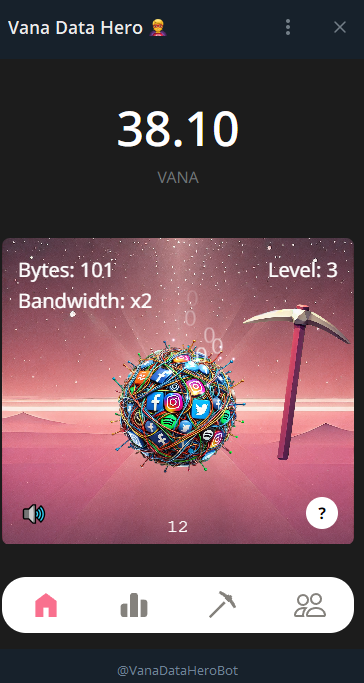
- In addition to simply clicking the screen, there are also various activities such as following social media, inviting friends, and adding to the test network to complete, and different scores will be rewarded.
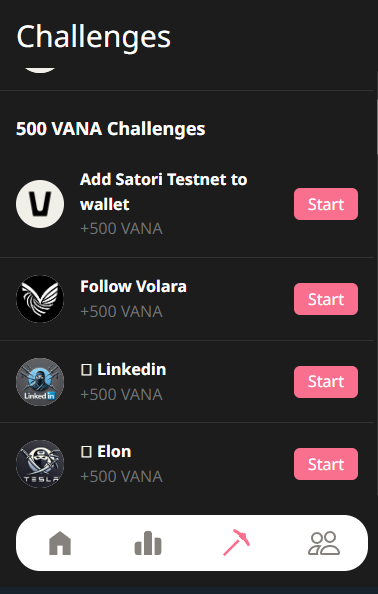
The project team is clearly knowledgeable about marketing and tapping into trends. For example, one of the tasks is to reply to Musk's previous posts on AI, data, and privacy-related topics, completing which will earn 500 VANA points; this is a bit of a way to unite the masses and promote Vana's own flavor.
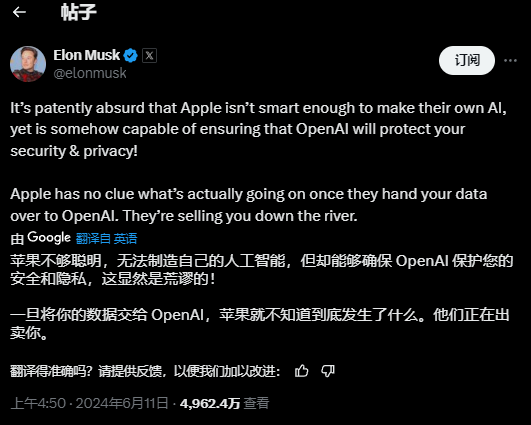
However, we currently do not fully understand the exchange token ratio and distribution rules of these VANA points. Interested players can further follow Vana's social media for more information.
However, with the support of VC giants and the successful precedent of Telegram mini-programs, there will definitely be giveaways and the expected, but the point-based gameplay can be tiring and FOMO-inducing. It's a matter of personal preference how to participate.
Adult, the times have changed
Interestingly, even the high-profile AI projects are now using Telegram mini-programs to attract attention and generate buzz.
Previously, AI projects gave a high-end feeling, but after the industry's rejection of VC coins and the big discussion about Mass Adoption represented by TON's ecosystem mini-programs, project teams have clearly adapted to the industry's changes.
They need to unite with VC players and also appeal to the masses.
If you look up earlier information about Vana, you will find that after its establishment in 2021, the project was positioned as an AI identity generation application.

Clearly, making applications is not as good as building infrastructure, and targeting both VCs and the masses is better than just focusing on VCs.
After the transformation, you can clearly see the change in the project's Go To Market strategy. There are only so many big narratives, and new technologies cannot come out immediately. Instead of hoping for changes in the overall environment, it's better to adjust your posture to the maximum extent and adapt to the current market rhythm.
The author expects that there will be more and more new projects, or old projects with new integrations, changing their gameplay.
It's the time, it's the fate.
免责声明:本文章仅代表作者个人观点,不代表本平台的立场和观点。本文章仅供信息分享,不构成对任何人的任何投资建议。用户与作者之间的任何争议,与本平台无关。如网页中刊载的文章或图片涉及侵权,请提供相关的权利证明和身份证明发送邮件到support@aicoin.com,本平台相关工作人员将会进行核查。




